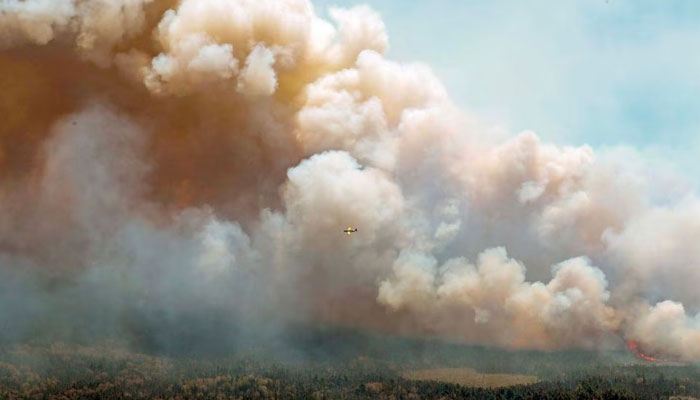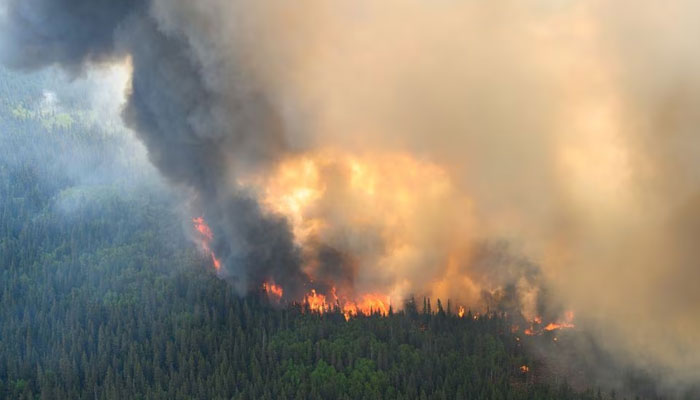3
The EU’s Copernicus atmospheric monitoring service said on Tuesday that wildfires burning thousands of square kilometers of land in eastern and western Canada released a record 160 million tonnes of carbon, as the smoke has just reached Europe.
This year’s fire season is Canada’s worst on record, with about 76,000 square kilometers (29,000 square miles) burning in eastern and western Canada.
That’s more than the area burned in 2016, 2019, 2022 and 2022 combined, according to the Canadian Interagency Wildfire Center.
As of June 26, annual emissions from fires are now the highest in Canada since satellite monitoring began in 2003, surpassing 140 million tonnes in 2014.
“The difference is that the fires in eastern Canada are driving this growth in emissions more than in western Canada,” said Mark Parrington, senior scientist at Copernicus.
Emissions from Alberta and British Columbia, he said, were far from record highs.
Scientists are deeply concerned about what the Canadian fires are putting into the atmosphere – and the air we breathe.
The carbon they emit is roughly equivalent to Indonesia’s annual carbon dioxide emissions from burning fossil fuels.
Forests act as an important sink for carbon that warms the planet. Canada’s northern boreal forests are estimated to store more than 200 billion tonnes of carbon, the equivalent of decades of global carbon emissions.
But when forests burn, they release some of that carbon into the atmosphere. This accelerates global warming and creates a dangerous feedback loop by creating conditions in which forests are more likely to burn.

Smoke from wildfires in Canada blanketed several major urban centers in June, including New York and Toronto, casting eerie orange skies.
Public health authorities have issued an air quality alert, urging residents to stay indoors. Smoke from fires is linked to higher rates of heart attacks, strokes and more emergency room visits for respiratory problems.
Now the plume has crossed the North Atlantic.
Worsening fires in Quebec and Ontario are expected to darken skies and dark orange sunsets over Europe this week,” Parrington said.
However, as the smoke is expected to remain high in the atmosphere, surface air quality is unlikely to be affected.
While large parts of Canada are still experiencing unusually hot and dry conditions, “there is still no end in sight,” Parrington said.
The fire season in Canada usually peaks in late July or August, with emissions increasing steadily throughout the summer.
Get updates latest news And viral news, football news and other world news daily only on Drita.com.

“Professional communicator. General music practitioner. Passionate organizer. Evil twitter fan.”






